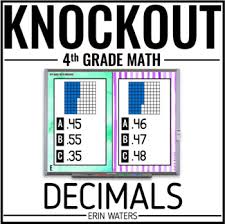
Brain Breaker is an early example of the Metroidvania genre and a side-scrolling action-adventure platform game. In 1985, it was released for the Sharp X1. The player has to place 15 blocks in a certain sequence and then solve a puzzle. This game can be used by students to keep them focused and on task.
Brainbreaker is a code-breaking game Brain Breaker.
Brain Breaker a videogame that is based upon the code-breaking puzzle game Mastermind. It asks players to decipher random codes. It aims to teach students problem-solving skills and increase cognitive thinking abilities. It encourages social interaction and physical activity. To solve the code, players are given eight chances to guess. Players will receive gold balls if they correctly guess the code. They will be awarded silver balls if they are not correct.
This code-breaking game is played between two players and is adjustable in difficulty. Beginners may find it easier to guess codes, but experienced code-breakers can face repeated colors as well as holes left empty. Truly a brain teaser

It is a puzzle where students have to place 15 blocks in the correct order.
The Fifteen Puzzle became popular in Europe in the 1880s. There are more then 20 million possible arrangements for the blocks. Only one block is missing. American mathematicians found that half of the initial arrangements could be solved. They performed the following mathematical analysis: Any number that passes through an even number boxes must be positive.
It is a physical brain-break
There are many advantages to having a physical brain-break. It helps your child get out of their chair and gets blood flowing. It can also help you regain control and make it easier for your child to focus. Physical breaks are as enjoyable and effective as meditation. These are just four ways to introduce physical brain breaks to your child.
Take a walk or stretch. Both of these activities will improve brain activity. It is a proven fact that exercise improves attention and concentration. Exercising also helps students memorize vocabulary words faster. Exercise also decreases stress levels, making it easier to concentrate on other tasks.
It helps students stay focused
Brain breaks are a great way for students to stay focused. Brain breaks can help students understand how to manage their emotions and recognize when it is getting frustrating. For students who find it difficult to finish their homework, they can take a short break and then resume the task. These brain breaks also build students' self-esteem and confidence. They help students understand that they can overcome any difficulties with their homework. This will allow them to remain motivated to complete their assignment.

Brain breaks are a great way to help students improve their creativity and social skills. To help students focus, they can sing or dance. The break from studying can help shy students become more outgoing. This can help students be more prepared for class discussions. This will make them more open to being asked questions.
FAQ
What is early childhood education?
Early Childhood Education (ECE) is a field that helps children to become healthy and happy adults. It involves everything from teaching children to read to preparing for kindergarten.
Early childhood education is designed to help children grow and learn by providing them with appropriate experiences.
Early childhood educators are often called upon to assess the developmental needs of each child they come across. This helps to decide whether a particular program is best for each child.
Parents can also interact with teachers and other professionals with experience with young children through early childhood programs.
Parents play an important role in an early childhood education as well. They should be able and willing to help their children in any way they can.
Parents can also take part in activities that teach skills to their children for the rest of their lives.
Sometimes, early childhood education is also called preschool education. However this term is interchangeable with daycare centers. Prekindergarten education starts around three years ago, and early childhood education is similar.
Which factors are important when selecting a major
The first step is to decide whether you prefer to enter a particular profession straight away or attend college. Next, you need to make a list listing your talents and interests. There are many things you might enjoy reading, listening or watching music, talking to others, doing housework, or even playing sports. You might be gifted in singing, dancing or writing. You can use your interests and talents to help you select a major.
You might be interested in art history and fine arts if you are looking to become an artist. Biology may appeal to those who love animals. You might consider pre-medicine or medical tech if you are interested in becoming a doctor. Computer science, computer networking, or computer engineering might interest you if you want a career that involves computers. There are many options. Be clear about your goals.
What is an alternative school?
An alternative school is designed to give students with learning problems access to education, by supporting them with qualified teachers who understand their unique needs.
Alternative schools are designed to give children with special education needs the chance to learn in a normal classroom setting.
They are also provided with extra assistance when necessary.
Alternative schools do not exist for students who are exclusion from mainstream schools.
They are open to children of all abilities and disabilities.
What is the difference between school and college?
Schools are usually organized into classes (or grades) with a teacher who teaches a group of students. Colleges, which are often larger and offer more specialized classes, may also include university-level programs. While schools are more focused on fundamental subjects, colleges might offer a range of subjects such as arts, science and languages. The curriculum at both levels is designed to prepare students for further study at higher levels.
What's the difference between private and public schools?
All students have the right to free education in public schools. They offer education from kindergarten to high school. Private schools charge tuition fees for each student. They provide education from preschool to college.
Charter schools, which are private but publicly funded, are also available. Charter schools don't use traditional curricula. They give students more freedom and allow them to pursue their interests.
Charter schools are popular among parents who believe their children should have access to quality education regardless of financial status.
What is homeschooling and how does it work?
Homeschooling is a method of education where children learn at home from their parents. It can also be called homeschooling, self-education and private education.
Family members who want to teach their children at home can opt for homeschooling. This method allows them to receive a quality education without leaving the comfort of their own home.
Children are educated by their parents from the time they are born until they reach high school. They decide what subjects and how long they should study. The student learns everything on his/her own time.
Parents choose when to start teaching their children. Most schools recommend that children start classes at age four to twelve years. However, some families wait to teach their children until they are old enough to do so.
Parents may use any number of resources to guide them through the curriculum. There are many resources that can help you learn. These include videos, books, websites, magazines and even magazines.
Many families find that homeschooling is a good fit for their hectic schedules. The parents can spend more time together than traditional public school teachers.
Is there a specific skill required for my chosen profession?
Writing skills are essential for lawyers. Nursing requires you to communicate well. You will need to be able to use math skills to become an accountant. These are just a few of the many examples. Consider all the activities you love. What type of job can you do to keep doing what you love? If you want to be an engineer, you'll need to learn how to design structures and machines. Understanding basic math will be essential if you want to be successful. You will need to be able to comprehend statistics and numbers in order for you to succeed in business. Communication skills are essential for teachers and other professions. You will need to have the ability to help others learn and to teach them.
Statistics
- “Children of homeowners are 116% more likely to graduate from college than children of renters of the same age, race, and income. (habitatbroward.org)
- They are more likely to graduate high school (25%) and finish college (116%). (habitatbroward.org)
- In most developed countries, a high proportion of the population (up to 50%) now enters higher education at some time in their lives. (en.wikipedia.org)
- Among STEM majors, that number is 83.5 percent. (bostonreview.net)
- Globally, in 2008, around 89% of children aged six to twelve were enrolled in primary education, and this proportion was rising. (en.wikipedia.org)
External Links
How To
Where can I find out more about becoming a teacher?
Teaching jobs are available for public elementary schools as well as private elementary schools.
To become a teacher, you must first complete a bachelor's degree program at one of the following:
-
A four year college or university
-
A degree program for associates
-
There are some two-year community colleges programs
-
These three types of programs can be combined
Candidates must fulfill state requirements to be eligible for teaching certification. These requirements include passing standardized exams and completing a probationary work experience.
Most states require candidates to pass a test called the Praxis II. This test measures the candidate's knowledge of reading, writing, mathematics, and language arts.
A lot of states also require applicants to have a specialized licence before they can be certified to teach.
These licenses may be obtained by the boards for education of the states.
Some states grant licenses without requiring any additional testing. If this is the case, the applicant should contact his/her state's board of education to verify.
Some states do not issue licenses unless the applicant has completed a master's degree program.
In some states, individuals can apply directly to the state education board for licensure.
The cost of licenses varies widely depending on their duration and the required coursework.
One example is that some states only require high school diplomas, while others require bachelor's degrees.
Some states require training on specific topics, such literacy or child development.
Some states require candidates to have a master's degree in order to become licensed.
When applying for certification, many states ask prospective teachers about previous employment.
You may want to mention that you have been employed in another occupation on your application.
However, most states will accept your prior work experience no matter what type of job you held.
It is possible to list your prior job title, position, as well as years of service.
This information can be very helpful for potential employers.
It shows that they have relevant skills.
While working, you may have learned new skills and acquired valuable work experience.
Employers can see this in your resume.